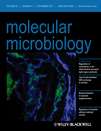The Synechocystis sp. PCC 6803 glutamine synthetase type I (GS) activity is controlled by a process that involves protein–protein interaction with two inactivating factors (IF7 and IF17). IF7 is a natively unfolded, 65-residue-long protein, homologous to the carboxy-terminal region of IF17. Both proteins have abundance of positively charged amino acid residues and a high isoelectric point. In this study, we analyse the IF amino acid residues involved in GS inactivation by a mutational approach, both in vitro and in vivo. The results clearly indicate that the GS–IF complex formation must be determined mainly by electrostatic interactions. We have identified three conserved arginine residues of IF7 and IF17 that are essential for the interaction of these proteins with GS. All these residues map in the homologous region of IFs. Furthermore, in vitro analysis of a truncated IF17 protein without the 82-residue-long amino-terminal part, together with the analysis of a Synechocystis strain expressing a chimeric protein, containing this amino-terminal part of IF17 fused to IF7, demonstrates that amino-terminal region of IF17 mostly confers a higher stability to this protein.
Lea aquí la entrevista a Lorena Saelices



 English
English